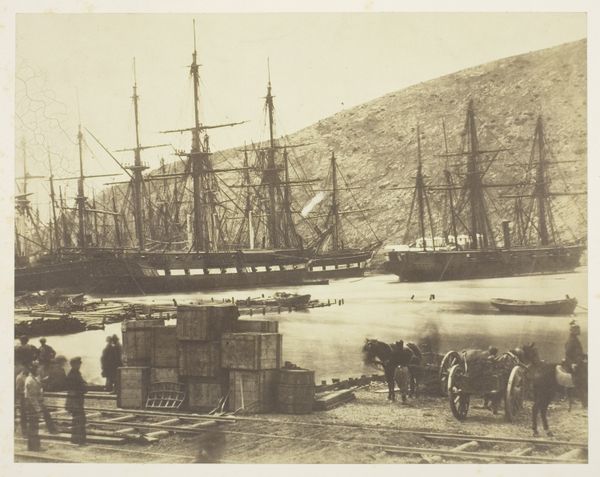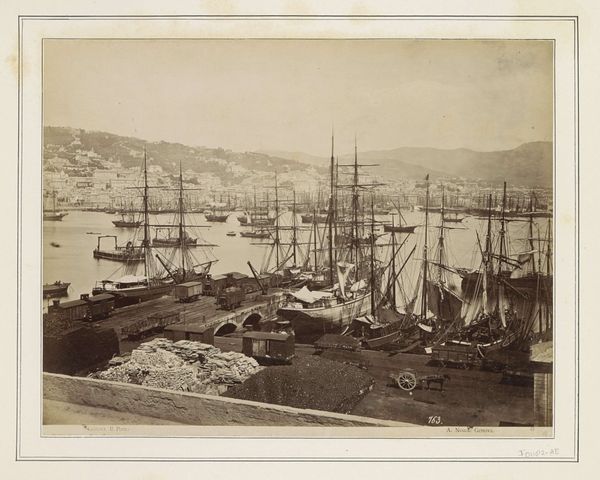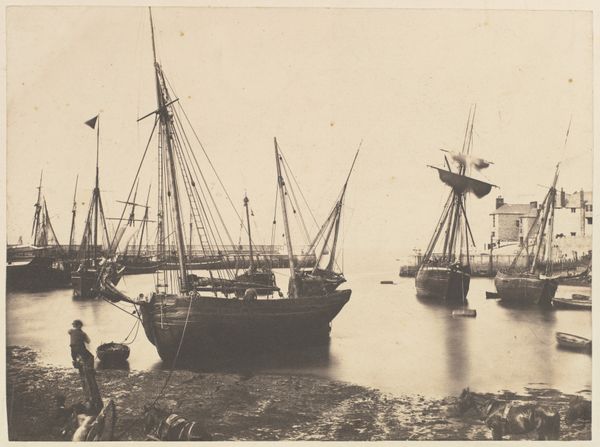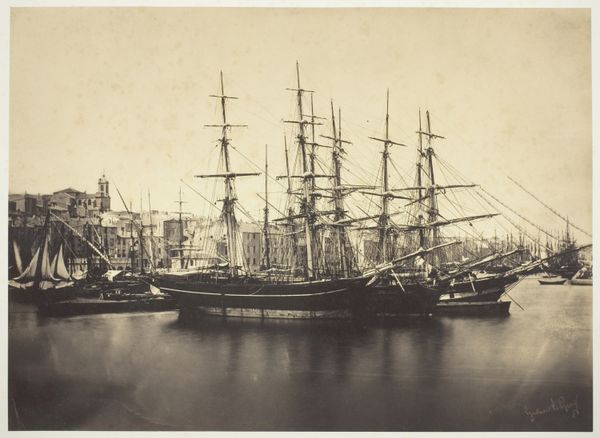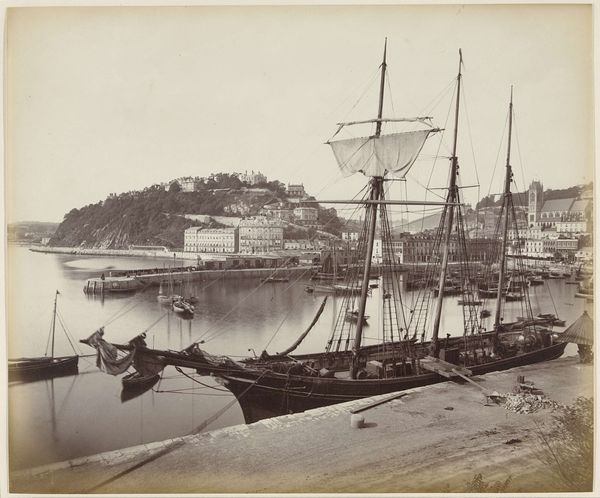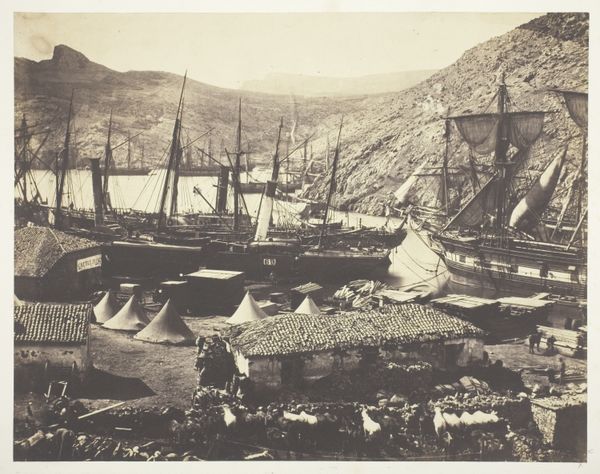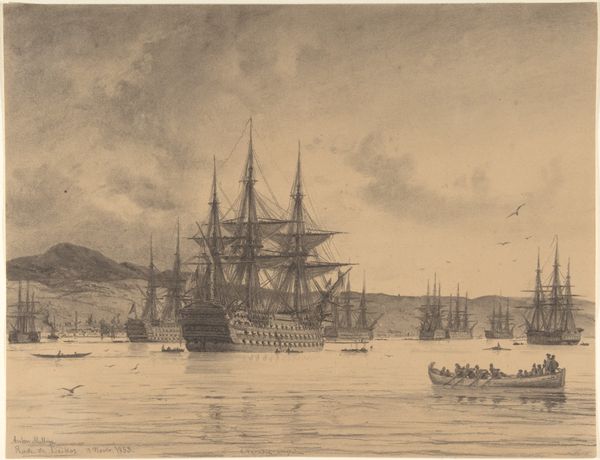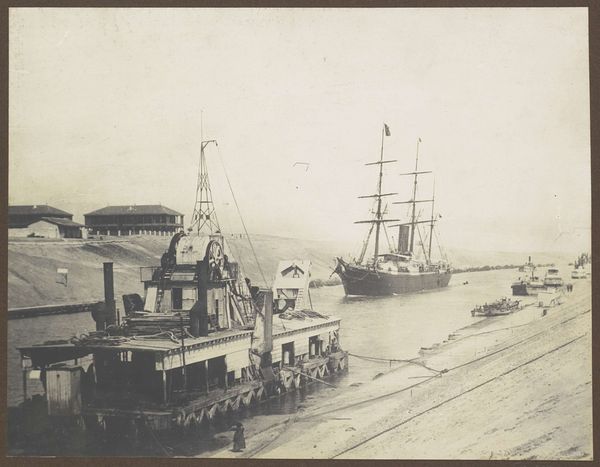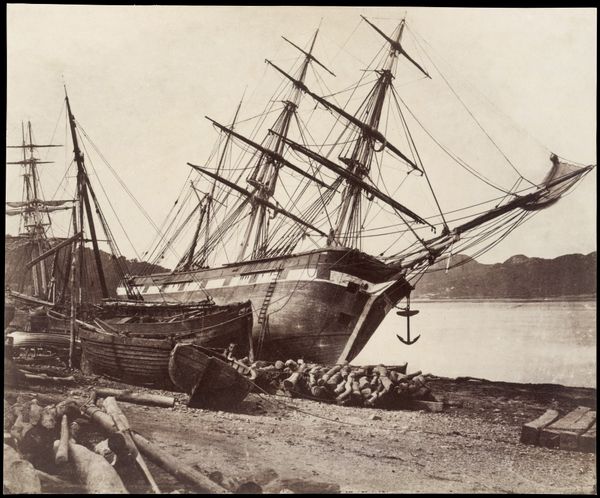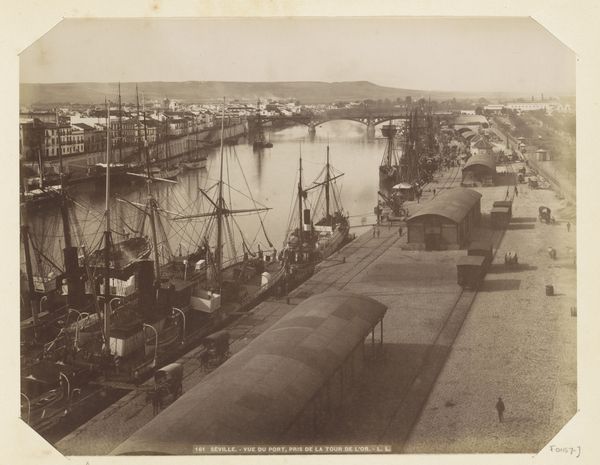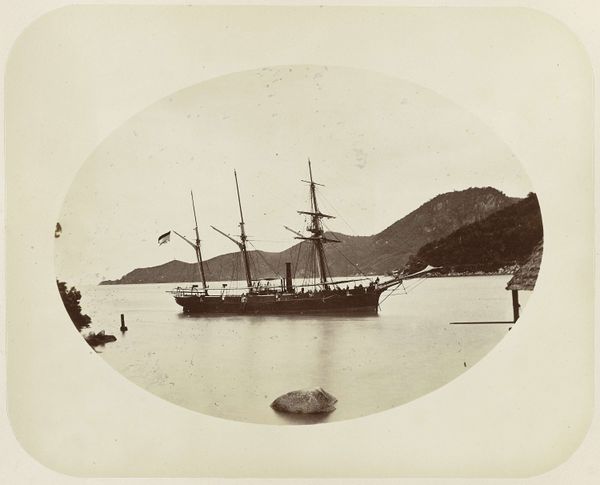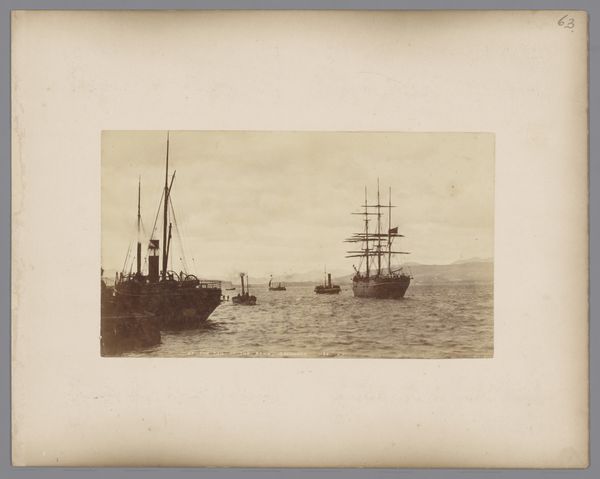
The Port and City of Sète-Mediterranean (Port et Ville de Sète-Mediterranée) 1857
0:00
0:00
silver, print, plein-air, daguerreotype, photography, gelatin-silver-print
#
16_19th-century
#
silver
# print
#
plein-air
#
landscape
#
daguerreotype
#
photography
#
gelatin-silver-print
#
france
#
monochrome photography
#
cityscape
#
realism
Dimensions: 32.1 × 40.3 cm (image/paper); 50.9 × 64.5 cm (album page)
Copyright: Public Domain
Curator: This gelatin silver print from 1857, entitled "The Port and City of Sète-Mediterranean," was created by Gustave Le Gray, and offers a meticulously composed view of a bustling French port. Editor: My first impression is a sense of almost profound stillness. Despite the subject matter, the tones and composition lend a calm, contemplative atmosphere. There's a story about human interaction with nature, labor and travel. Curator: Precisely. This piece showcases the early advancements in photography, a time when capturing such a detailed panorama was revolutionary. Note how the ships aren't just objects; they symbolize trade, exploration, and France's global presence. It marks a transitional moment, bridging pre-industrial life with emergent globalized markets. Editor: I see the photographic process itself becoming a kind of "objective" witness. There’s a starkness to it, an unromanticized record that still allows for nuanced readings. The contrast between the towering ships and small boats underscores the socioeconomic stratification inherent in maritime activity. How might colonial expansion shape that port? Curator: Absolutely. Le Gray expertly used tonal ranges, from the bright sky to the dark hulls of the ships, creating depth and drawing the viewer's eye across the landscape. This image presents not just a scene, but an idea: a world connecting through commerce. There is also a compositional allegory in that the human dwellings are forced to inhabit the hillside where only ships claim ownership of the flat plane of water. Editor: Looking closely at the workers on the pier, I also see themes of exploitation and the often-invisible labor that powered these economies. This picture is quiet, but powerful in capturing not only the aesthetic beauty but also the systemic issues. A mirror that reflects the beginning of wealth inequality that we know so well today. Curator: In studying this print, I feel an immediate connection to how cities memorialize themsleves as icons of wealth, using symbolism, narrative, and perspective, but it also reminds us to question whose stories truly dominate collective visual culture. Editor: Ultimately, examining this photograph, it compels us to reflect on the complex interplay of power, progress, and the human cost intertwined with a landscape in transformation.
Comments
No comments
Be the first to comment and join the conversation on the ultimate creative platform.
